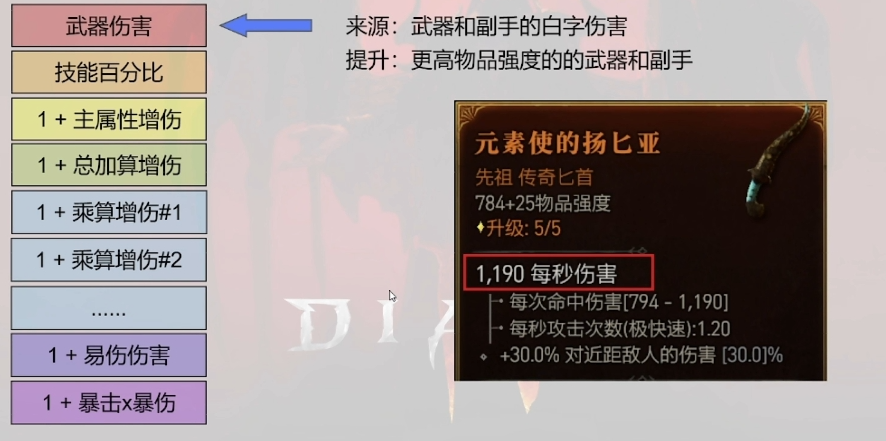Many friends in Diablo 4 don't know how to calculate the damage value. In this issue, the editor brings you an overview of the damage calculation model of Diablo 4. If you are interested, please follow the editor to take a look.

Except for white characters, main attributes, skill levels, vulnerability, and critical hits, all are added together and then multiplied with the previous ones.

The additional damage bonus is added all at once, and the benefit becomes smaller in the later stages. The specific types are as follows:
All damage (including damage after killing elites)
Core/basic/trap/fighting and other skill damage
Physics/Fire/Cold/Shadow/Lightning/Poison
Damage to near/far enemies
Damage enemies for crowd control/slowing/stun etc.
Damage enemies by bleeding/poisoning/burning etc.
damage to elites
Deals damage to healthy/wounded enemies
Damage while healthy/fortified
Berserker damage (including native 25% bonus)
The independent multiplication interval adding in one direction will lead to a single low income. The details are as follows:
Weapon off-hand white text (should be the damage per hit, the damage per second in the video is not accurate)

Skill level entry (will increase skill multiplication coefficient)

Main attribute (taking the mage as an example, 700 intelligence = 70.0% damage increase, independent from other parts)

Vulnerable (conditional vulnerability also counts)

Critical hits and critical injuries (conditional critical hits and critical injuries are counted)

Suggestions for selecting terms are as follows:
Compare two entries in the same area. If they can be triggered stably, choose the one with a higher value. If there is an entry with a low coverage rate, it is generally not selected.
Compare two different entries, add as many independent multiplication areas as possible, stack independent multiplication damage as evenly as possible to avoid single diminishing returns, stack critical hit damage as evenly as possible, and pay attention to critical hit overflow.